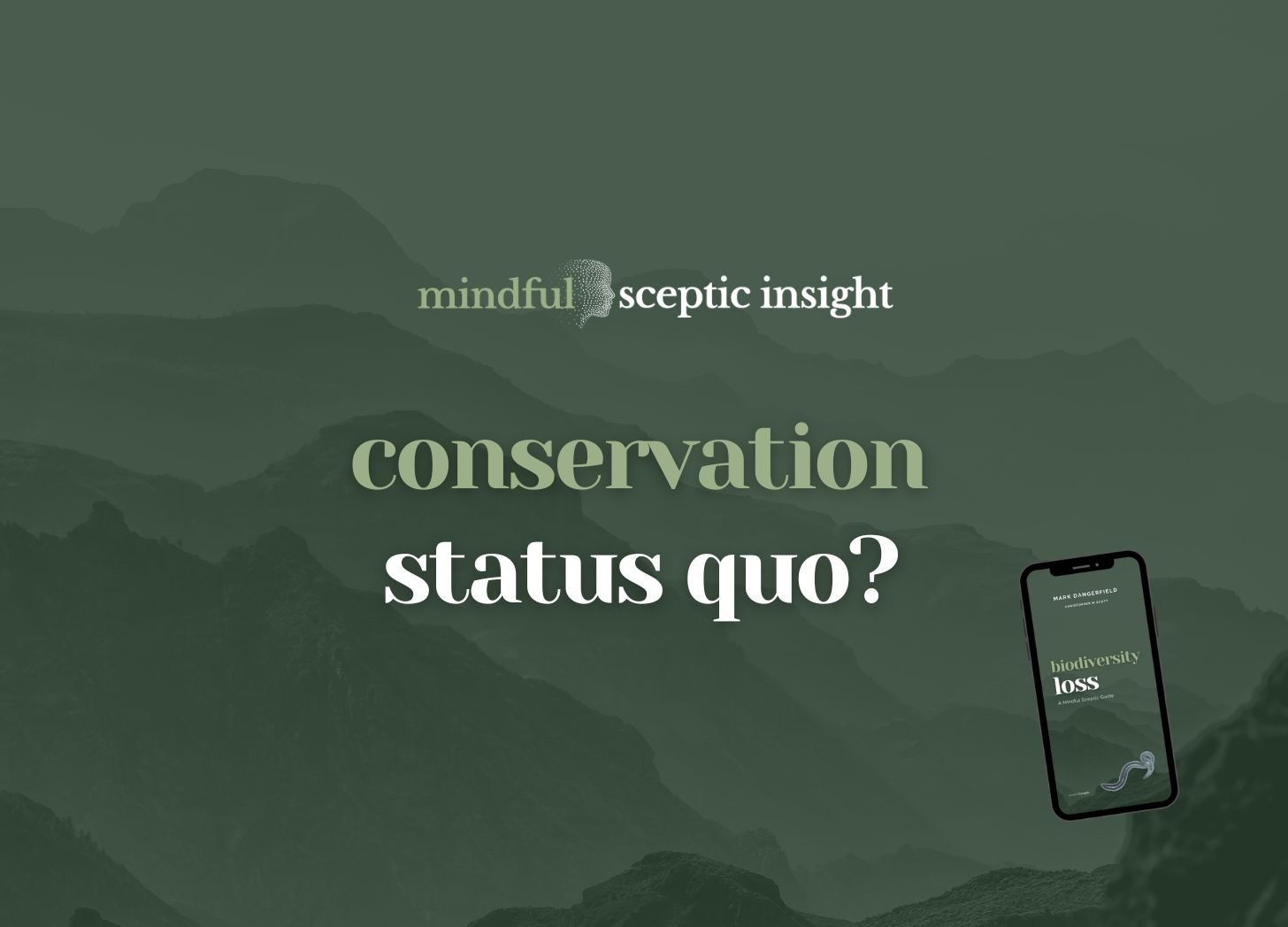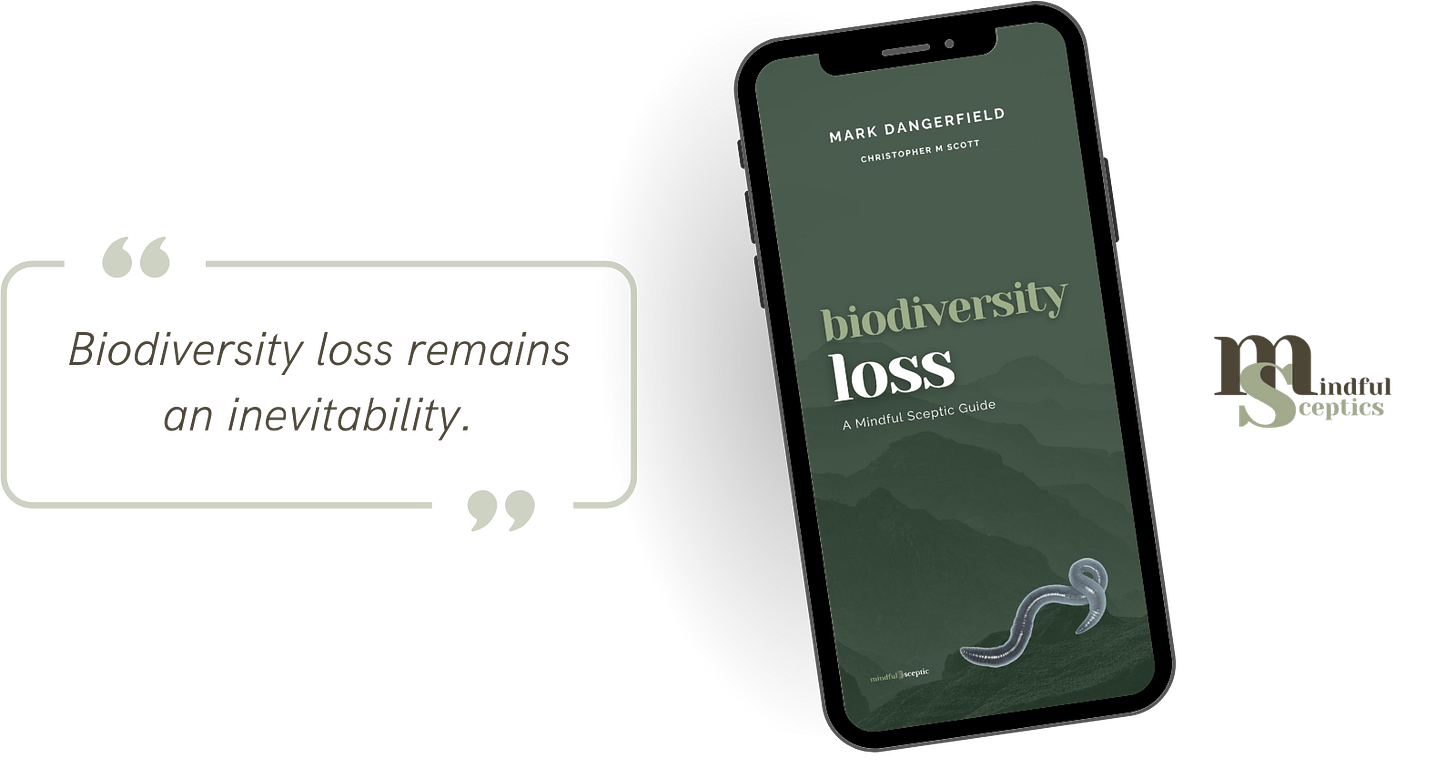Conservation, like democracy, sounds wonderful until you encounter its real-world practitioners. For decades, the environmental movement has sold the public a comforting story about preserving pristine nature and maintaining the ecological status quo.
This narrative assumes we can freeze landscapes in time, protecting them from human influence while continuing to accommodate 8 billion people who require 22 trillion kilocalories daily.
The mathematics don’t work, but mathematics rarely troubles true believers.
Core Idea
The conservation establishment operates on the fundamental delusion that we can maintain pre-industrial ecosystems while supporting modern civilisation.
This preservationist mythology treats nature as a museum exhibit. A stuffed ocelot or a reconstructed dinosaur fossil that can be cordoned off behind park boundaries, while the rest of the planet becomes a factory farm.
Conservation biologists calculate how much habitat we need to save this species or that ecosystem, as though we’re dealing with static objects rather than dynamic processes shaped by 400 million years of disturbance, adaptation, and change.
Modern conservation emerged from 19th-century Romantic ideals about wilderness, crystallised by Victorian gentleman naturalists, most of whom had never faced genuine resource scarcity. These founding myths persist in today’s environmental policies, especially in the notion that “untouched” nature represents some optimal state, that human presence necessarily degrades ecological systems, and that preservation equals protection.
This thinking made sense when human impact was localised and reversible. It becomes a dangerous fantasy when human influence shapes every biogeochemical cycle on the planet.
Counterpoint
The preservationist approach fails because it misunderstands both nature and humanity’s role within it.
Nature doesn’t preserve itself. It is not static. It adapts, evolves, and responds to disturbance. The “pristine wilderness” that conservationists seek to protect never existed as a stable baseline.
Every ecosystem humans encounter has been shaped by geological catastrophes, climate fluctuations, species migrations, and previous disturbances at scales that make our impact seem modest by comparison… hard to believe, but true.
More critically, the status quo preservation model treats human needs as external to ecological systems rather than as part of them. When you need to feed 8 billion people, convert 78% of habitable land to agriculture, and appropriate 25% of net primary production for human use, you cannot simultaneously maintain pre-agricultural ecosystem states.
The energy and materials required for human civilisation must come from somewhere.
Conservation that ignores this reality becomes an exercise in moral theatre full of expensive gestures. The Reserve System Fallacy compounds this problem. We ease our consciences while ecosystems collapse around the preserved fragments.
Protected areas, no matter how well-designed, cannot function as ecological islands in a sea of intensive agriculture and urban development.
Species move. Nutrients flow. Climate changes regardless of park boundaries.
A national park surrounded by wheat fields isn’t preserving an ecosystem. It’s maintaining an ecological museum display that becomes less representative of functional natural systems each year.
Thought Challenge
Map Your Consumption Footprint… Calculate the land area required to support your annual consumption for food, housing materials, energy, and manufactured goods. Most urbanites require 2-4 hectares of productive land per person. Multiply this by your household size, then locate this area on Google Earth around your city. How much “natural” landscape can you identify within this consumption footprint? What does this reveal about the feasibility of maintaining pristine nature while supporting modern lifestyles?
Question Reserve Effectiveness… Identify the nearest national park or nature reserve to your location. Research its biodiversity trends over the past 30 years. Are species populations stable, increasing, or declining within protected boundaries? What external pressures, such as climate change, pollution, edge effects, and invasive species, will influence outcomes within the reserve? How does the reserve’s ecological health compare to its surroundings? This exercise reveals whether conservation boundaries provide meaningful protection or merely delay degradation.
Closing Reflection
Conservation that ignores thermodynamics and ecological reality becomes conservation that fails.
What we need instead is honest recognition of humanity’s permanent ecological integration. We need to lose that adherence to preservation fantasies that waste resources while ecosystems degrade.
We cannot maintain the status quo because the conditions that created that nature no longer exist.
We can, however, design human systems that work with ecological processes rather than against them.
Evidence Support
Bar-On, Y. M., Phillips, R., & Milo, R. (2018). The biomass distribution on Earth. Science, 360(6394), 987–990.
TL;DR… quantifies the global biomass of all life forms and reveals that humans and their domesticated animals now make up approximately 96% of mammalian biomass on Earth. Wild mammals comprise only 4%, highlighting the ecological dominance of human activity and our livestock at the expense of global biodiversity.
Relevance to insight… clear, quantitative support for the assertion that humans and their domesticated species dominate global mammal biomass—a central claim from the insight. This evidence supports the argument that most of the world’s biological capacity is commandeered for human purposes, leaving little for wild species and directly linking human expansion to biodiversity loss.
Haberl, H., Erb, K. H., Krausmann, F., Gaube, V., Bondeau, A., Plutzar, C., ... & Gingrich, S. (2007). Quantifying and mapping the human appropriation of net primary production in Earth’s terrestrial ecosystems. Proceedings of the National Academy of Sciences, 104(31), 12942–12947.
TL;DR… global analysis of human appropriation of net primary production (HANPP), showing that humans co-opt a substantial and growing fraction of the plant energy available on land—up to 25% globally. The study elucidates how such large-scale appropriation diminishes energy available to other species, driving ecosystem simplification and species loss.
Relevance to insight… supports the claim that human consumption is the main driver of biodiversity loss (not just rare species). It links intensified agriculture, habitat conversion, and reduced biomass availability for wild organisms directly to the erosion of global biodiversity.
Díaz, S., Fargione, J., Chapin III, F. S., & Tilman, D. (2006). Biodiversity loss threatens human well-being. PLOS Biology, 4(8), e277.
TL;DR… demonstrates that biodiversity loss—especially the loss of common species—undermines ecosystem functions that sustain human societies, such as pollination, nutrient cycling, and water purification. The authors emphasise that focusing solely on rare or charismatic species overlooks the foundational roles of abundant species in driving ecosystem services.
Relevance to insight… explains why prioritising common species, ecosystem processes, and soil biodiversity is much more significant for human survival and planetary resilience than rare-species conservation alone. It also quantifies many of the cascading impacts that follow from eroding this “invisible majority” in living systems.
Hooper, D. U., Chapin, F. S., Ewel, J. J., Hector, A., Inchausti, P., Lavorel, S., ... & Wardle, D. A. (2005). Effects of biodiversity on ecosystem functioning: a consensus of current knowledge. Ecological Monographs, 75(1), 3-35.
TL;DR… consensus review finds that a reduction in biodiversity, particularly the loss of functionally important and abundant species, consistently diminishes ecosystem function and resilience. The findings highlight that biodiversity–ecosystem functioning relationships are strongest when it comes to common species and their contribution to processes like productivity and nutrient cycling.
Relevance to insight… the erosion of ecosystem services due to common species loss matters far more for ecosystems and people than the fate of rare species. It validates shifting conservation attention to maintaining abundant species and functioning processes—especially those associated with soil—rather than only cataloguing or “saving” rarities.
Bardgett, R. D., & van der Putten, W. H. (2014). Belowground biodiversity and ecosystem functioning. Nature, 515(7528), 505-511.
TL;DR… reviews the roles of soil biodiversity in driving critical ecosystem functions, including nutrient cycling, plant productivity, and disease regulation. It demonstrates that belowground (soil) organisms are essential for food security and ecosystem resilience, and that their loss—often overlooked—poses severe risks to sustainability.
Relevance to insight… robust scientific backing for focusing on soil biodiversity as a pillar of ecosystem function and planetary health. The evidence directly buttresses the insight’s claim that practical solutions and meaningful conservation must prioritise soil and process-focused biodiversity, not just the preservation of rare species.
Collectively, these papers provide clear and comprehensive scientific support for the insight’s central arguments—that human-driven appropriation of biomass, land, and natural processes, along with misplaced priorities on rare species, are at the heart of biodiversity decline and loss of ecosystem functions necessary for long-term human well-being.






